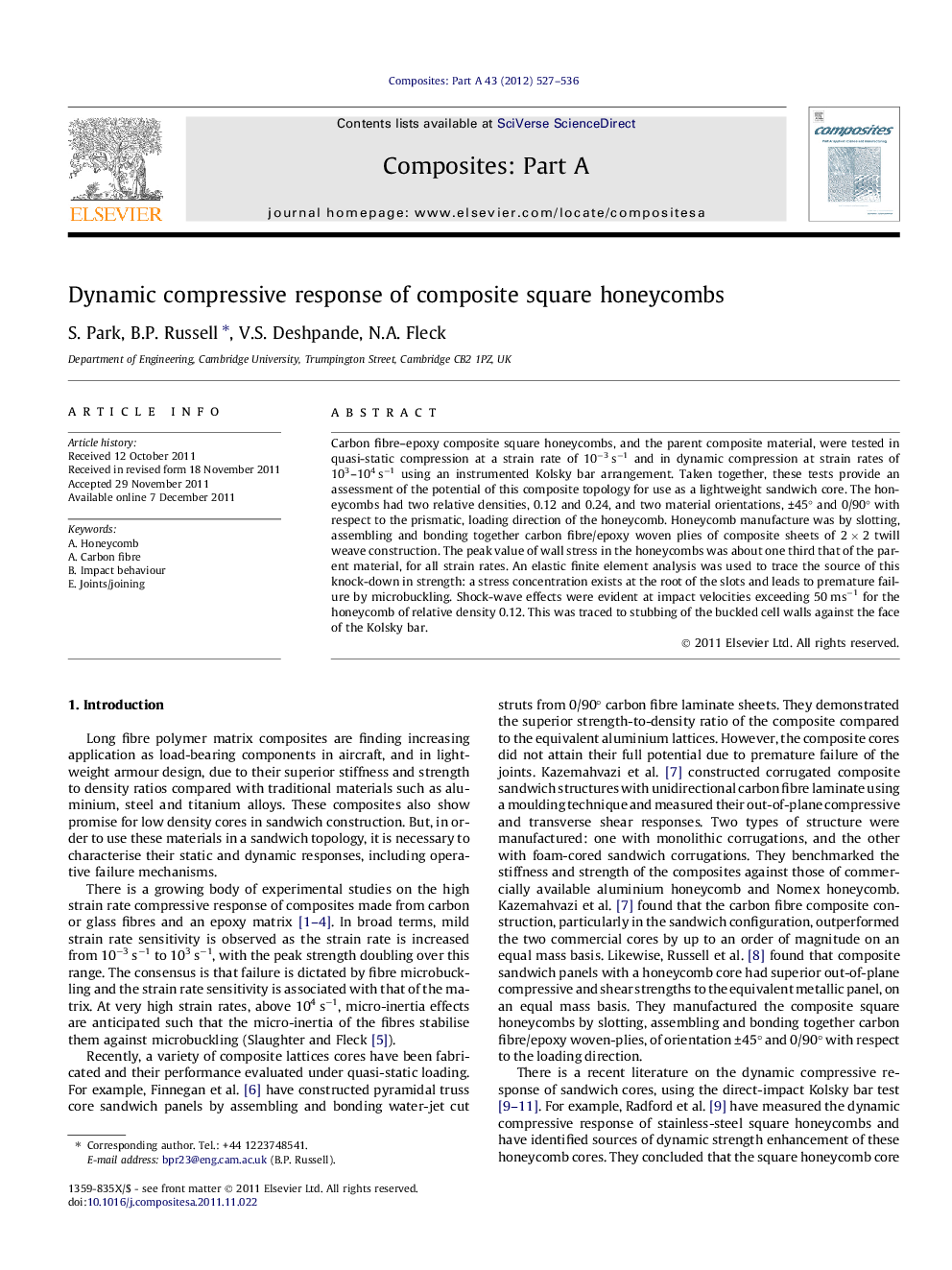| Article ID | Journal | Published Year | Pages | File Type |
|---|---|---|---|---|
| 1466850 | Composites Part A: Applied Science and Manufacturing | 2012 | 10 Pages |
Carbon fibre–epoxy composite square honeycombs, and the parent composite material, were tested in quasi-static compression at a strain rate of 10−3 s−1 and in dynamic compression at strain rates of 103–104 s−1 using an instrumented Kolsky bar arrangement. Taken together, these tests provide an assessment of the potential of this composite topology for use as a lightweight sandwich core. The honeycombs had two relative densities, 0.12 and 0.24, and two material orientations, ±45° and 0/90° with respect to the prismatic, loading direction of the honeycomb. Honeycomb manufacture was by slotting, assembling and bonding together carbon fibre/epoxy woven plies of composite sheets of 2 × 2 twill weave construction. The peak value of wall stress in the honeycombs was about one third that of the parent material, for all strain rates. An elastic finite element analysis was used to trace the source of this knock-down in strength: a stress concentration exists at the root of the slots and leads to premature failure by microbuckling. Shock-wave effects were evident at impact velocities exceeding 50 ms−1 for the honeycomb of relative density 0.12. This was traced to stubbing of the buckled cell walls against the face of the Kolsky bar.
